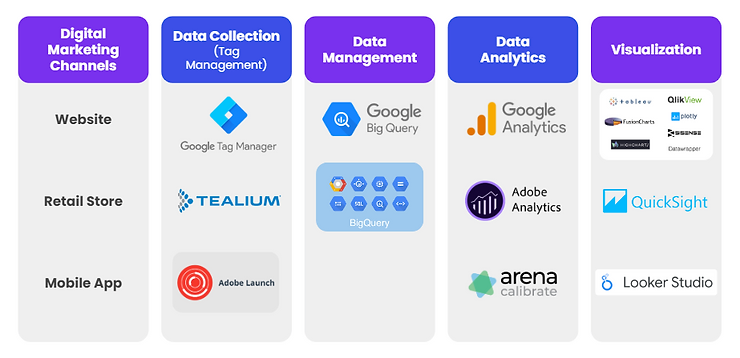The rush is on. Marketers are in various stages of their shift to GA4 and, more critically, into a first-party data, cookieless marketing paradigm.
Some early adopters have been preparing for many months now. They have transitioned to GA4 with the help of certified migration experts and rebuilt their marketing stack to leverage first-party data.
If you, like most, are still in the middle of the transition, then you will find this blog post instructive.
Let’s first stand back and get a sense of where we are.
We are at the cusp of a new chapter of opportunities in digital marketing.
From the soon-to-be-sunsetted Universal Analytics era, marketers may miss the ease and familiarity of third-party cookies and the marketing stack and process built around it, but let’s face it, we all have lived with its limitations:
- the inaccuracy of session-based data tracking,
- the lack of cross-device tracking
- out-of-date attribution, and
- overcounting of traffic
GA4, when implemented right, promises to take care of many of UA’s limitations with
- A radical event-based architecture
- better server-side tracking
- a more nuanced and wider view of user engagement and
- advanced reporting capabilities.
GA4 also puts first-party data at the heart of your digital marketing. So what does this mean for you?
First and foremost, it’s critical to migrate to GA4 without any glitches and loss of valuable historical and current data. So it’s important to call in certified experts who have been there, done that and can partner with you if needed in the coming months without you straining your 2023 budget.
Next, it’s key that you tap the full advanced capabilities of GA4.
GA4 vs. UA: A better view and measure of the customer journey
GA4 is not just a response to the going away of third-party cookies. It is also built to track and measure today's mobile and app-centric customer journey.
Today’s consumer searches for information on the mobile, visits the product or service websites on the laptop then makes a booking or purchase on an app.
GA4 gives marketers a more in-depth view of customer engagement. It also uses the latest ML-led predictive analytics to fill in gaps in the data and guide your marketing campaigns. In this, the new GA4 funnel report, engagement report, and predictive metrics report are very useful.
Make sure you use expert partners to custom-define Events, build Path explorations, and customize full Funnel Exploration reports to understand customer journeys better.
First-party data: A truly consent-led customer-centric marketing era
For the customer, first-party data ensures personalized, consent-based experiences.
For the marketer, it enables more personalized customer engagement and deeper insights into customer buying behavior. It also gives better visibility into the customer lifecycle.
All this delivers better conversion aided by higher data accuracy and multi-touchpoint data integration.

To know more about how your First Party Data can be operationalized in a cookie-less world, read the summary of our popular webinar on First party Data Strategy & Models.
How to get the most out of GA4 with Arena Calibrate
Arena Calibrate is a comprehensive out-of-the-box solution that enables you to leverage GA4 data and generate audience, acquisition, behavior, and conversion reports.
It is further supported by quick & flexible report customizations from an expert team of BI specialists, all baked into affordable subscription plans. Moreover, the data connection process takes minutes, and auto-generated templates are available to view as a starting point.
Arena Calibrate offers over 300 connectors, including GA4, to accurately and directly integrate all your cross-platform data in one place. In comparison, tools like Google’s Looker Studio will require in-house BI teams and also separate and expensive subscriptions to third-party connectors. (You will find a detailed head-to-head feature & cost comparison on our blog).
Arena Calibrate’s dashboard visualizations and automated blended reports also ease the transition to GA4 based reporting for the entire marketing and wider business team.
2023 is a critical and transitional year for digital marketers. Each step is crucial and can make the difference between sink or swim.




